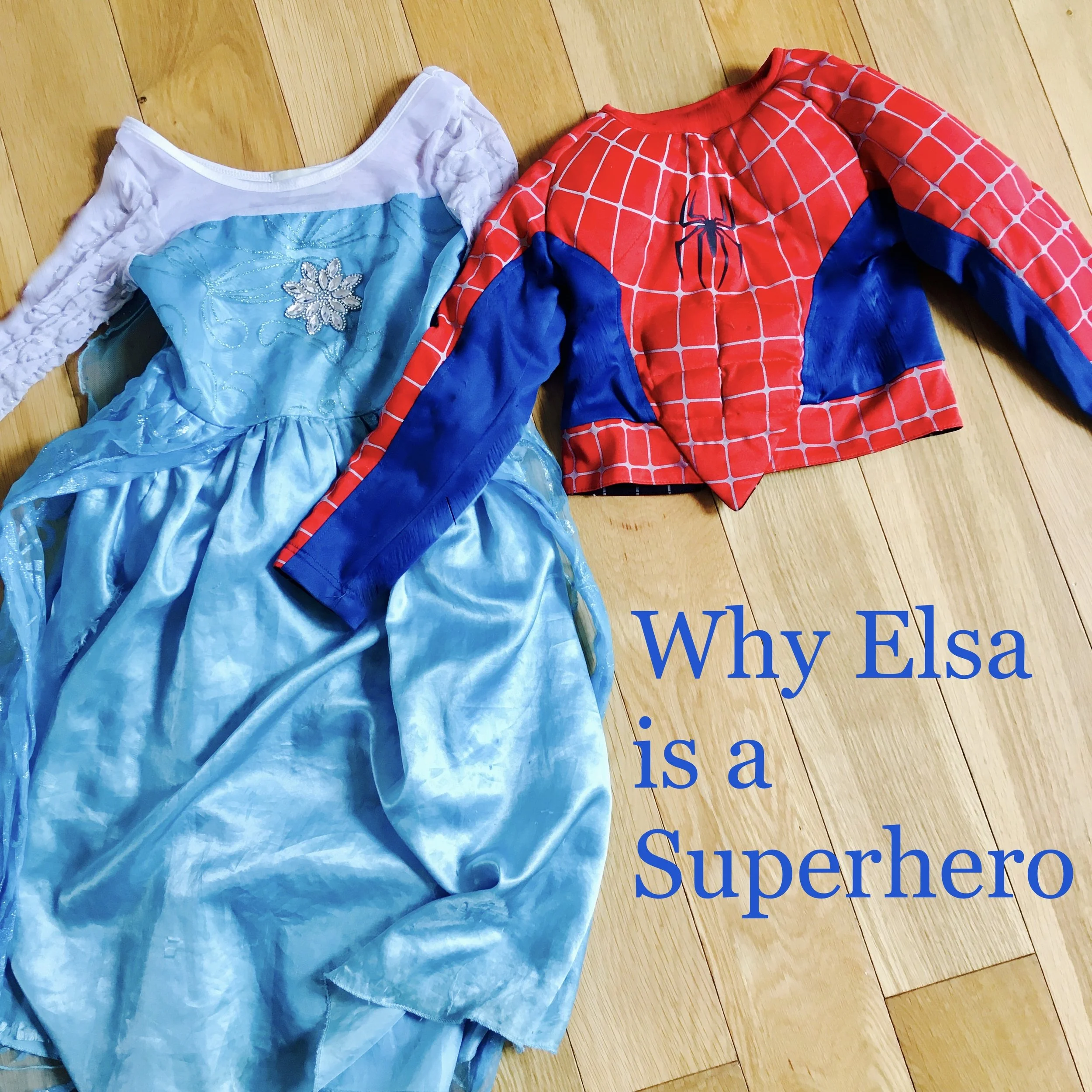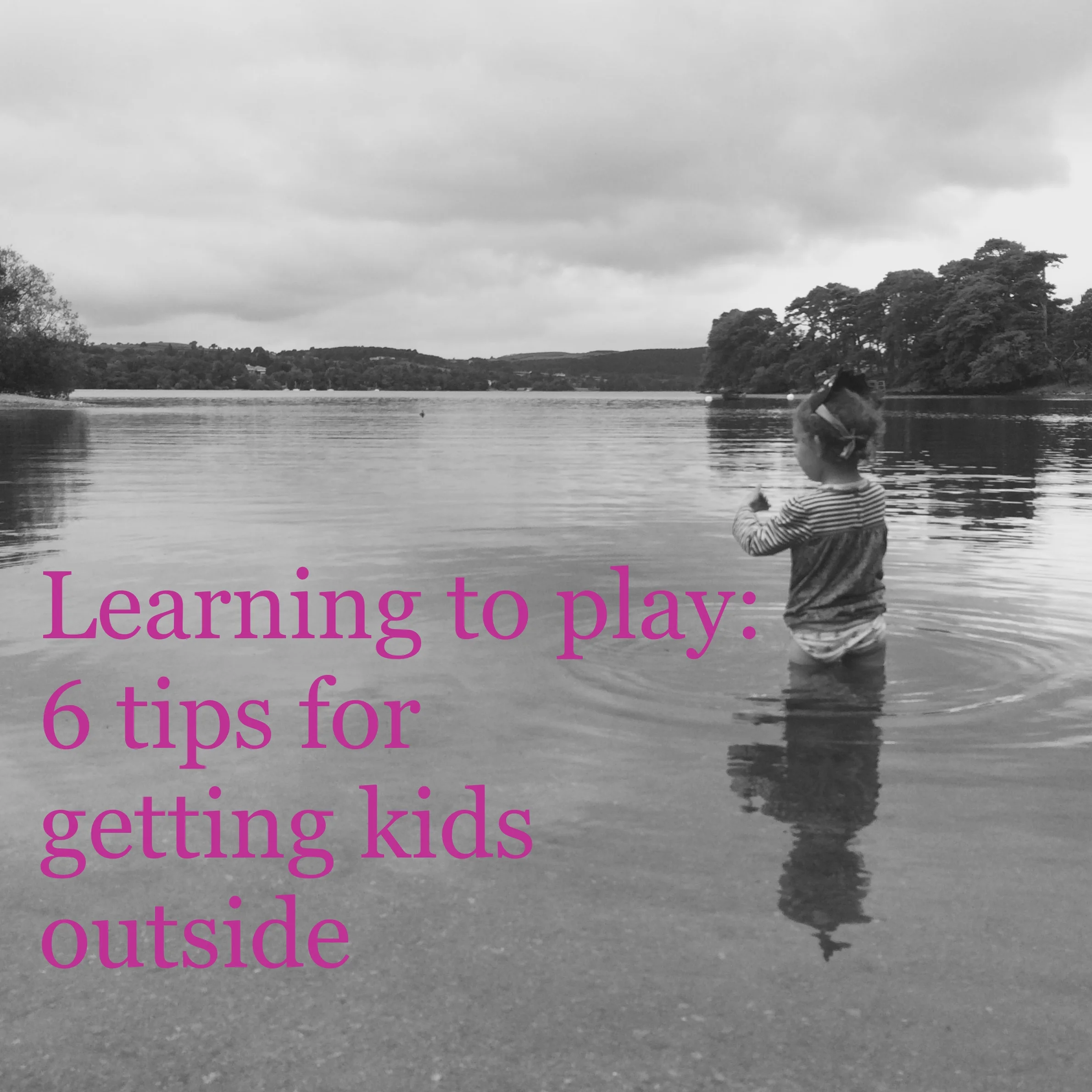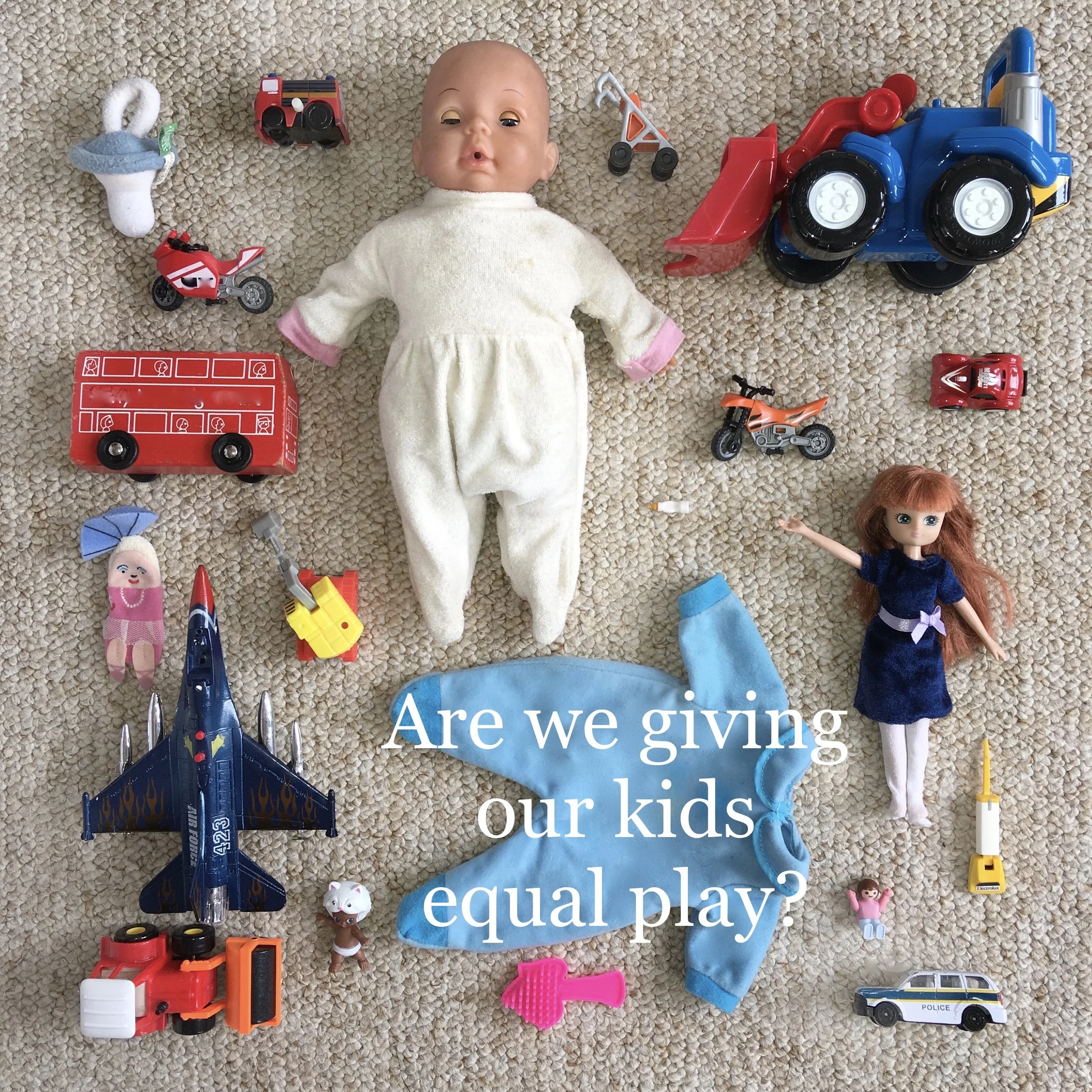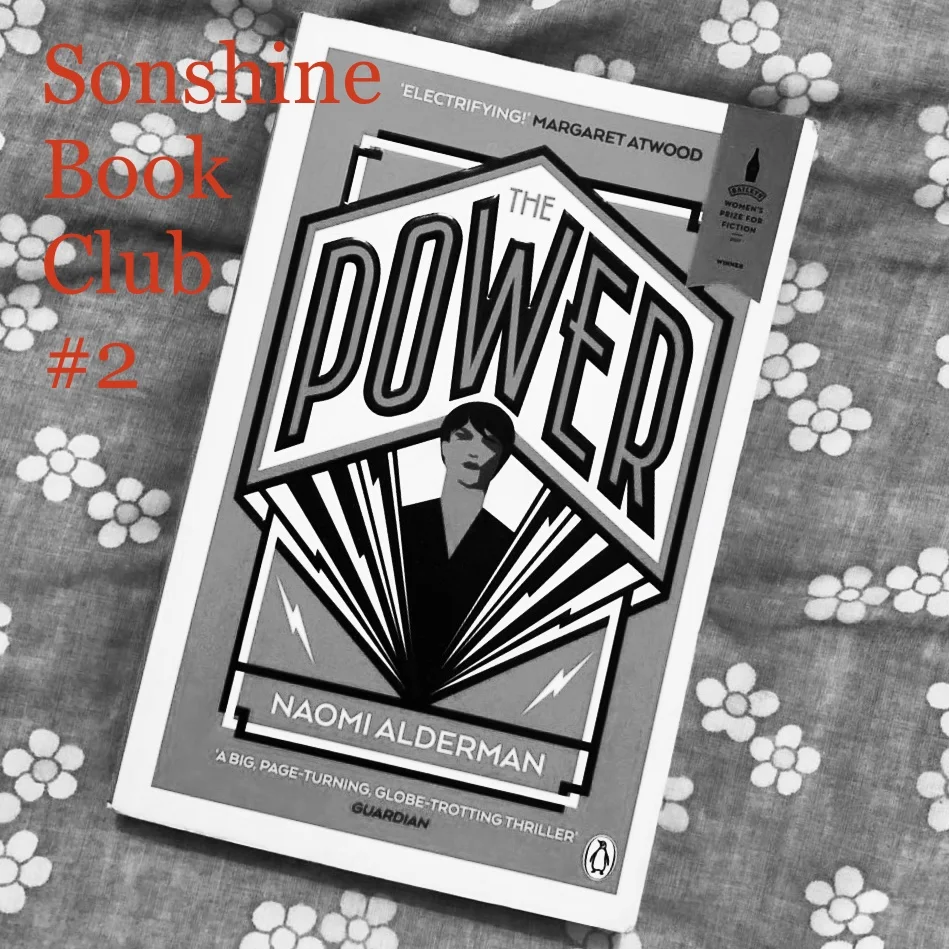Introductions: Emma Allen, Sandplay Therapist
Weapons make up a big part of play for many kids - especially boys it seems. So for this issue, we meet Emma Allen, Art Psychotherapist and Sandplay Therapist.
In this in-depth and fully-researched interview, we find out whether we need to worry about our kids’ burgeoning interest in fighting, sticks, swords and guns.
Emma has also created a link list of all the scholarly articles she refers to and other books and articles you may be interested in - find it at the bottom of the page.
You are an Art Psychotherapist and a Sandplay Therapist. Tell us a little bit about what that means.
Sandplay Therapy involves creating a three-dimensional picture using both sand and symbols in a psychotherapeutic context with a trained therapist. It can be used with both children and adults. There are two trays - one wet and one dry, and clients can use a collection of miniature figures and objects (that represent all walks of life) in either one or both trays.
Sandplay invites spontaneous play which does not require skill or ability, and there is no right or wrong. People often feel that they are able to show a different side to themselves; expressing very deep thoughts and feelings that would otherwise be too difficult to verbalise. It can be enjoyable and empowering to be allowed to play. For some clients, just placing their hands into the sand can be self-soothing and regulating; helping with both physiological and psychological aspects of healing. For others, not being asked to produce imagery through drawing (particularly for adults) can be very reassuring; reducing self-criticism, and a fear of the blank page!
As someone who works with play all the time, we’re really interested in your thoughts on fighting play and weapon-play for kids. a lot of kids love play wrestling or fighting from an early age, And as they get older, that sort of rough and tumble game seems to extend into weapon play.
Are there any recognised motivations for weapons-based or fighting play?
Interactive play is normal for young children. My 7 year-old nephew has an ongoing fascination and enjoyment of ‘nerf guns’ and will often find opportunities to play out battles and play-fights with his friends. This is nothing out of the ordinary for a child of his age. One thing to be clear about with play is that there does not need to be a purpose or motivation, as play is spontaneous, creative, fun. If there are any underlying motivations for weapons-based or fighting play, then it is not play.
Psychologically-speaking, weapon-play may relate back to the reptilian brain and survival tendencies. Play-fighting may be associated with a deep, unconscious need and ‘in-built’ instinct to hunt, and survive. Children learn through play, and it is more than just fun – it is within our nature (see below Brown, 2010) – weaponry-play exists in adults too.
Toy weapons equip the child with an immense sense of power and being in control; making a child feel they are an adult in that moment, where pretending to be in control is natural and understandable. It may also be innate to have an interest in tools, in extensions and enhancements of ourselves, and our ability in having an effect on others.
Do boys play more in this way than girls? Lots of parents and caregivers report this, but is this anecdotal evidence backed up?
We cannot be gender-biased as not all girls will play care-giver roles, and not all boys play aggressive roles. But, boys do seem to engage in more fighting/dominance, chase, restrain and boxing activities (see Boulton, 1996), and be more aggressive in their play-style compared to girls.
“Research has shown that the children who play with a variety of toys have more cognitive, emotional and social advantages”
This may be due to an attraction to power and dominance (in developing masculinity), and may be linked to male hormones. What may attract more boys to weapons-based play may be a combination of biological and cultural factors (see Weisgram, 2018 for example). There are also suggestions that different toys are encouraged according to gender. There has been an increase in public awareness into how toys have been gender-typed, and research has shown that the children who play with a variety of toys have more cognitive, emotional and social advantages (see Weisgram & Dinella, 2018). It is thought that gender-typed play constrains children’s social roles in adult life, and reflects and solidifies preconceived, old-fashioned, and sexist, gender stereotypes that may prevent children from reaching their full potential (see Weisgram & Dinella, 2018).
Sandplay therapists have noticed a difference in the content of play between boys and girls. Dora Kalff (who developed Sandplay from Margaret Lowenfeld’s ‘World Technique’ in treatment of children) observed differences in sand tray content of boys and girls - boys had more battle images. Battle scenes in play are often a way of exploring the child’s own sense of the world and how to resolve conflicts. Dora Kalff considered that the child explores his ‘battle with external influences and in coming to grips with them’.
Many parents are concerned about their kids playing in this way, and stop their children from play fighting or in particular from playing killing games. Are parents making correct assumptions about weapons-based or fighting play being aggressive or violent, and should they intervene to stop them?
It’s natural for parents to be concerned by their child’s fascination with and enjoyment of toy guns as they are things feared and loathed in the adult world (i.e. gun violence, gun crime and school shootings). As adults, we know that the world is a potentially frightening place where there are knives being carried by young people in gangs, and we are more aware of terrorism than ever before. This still doesn’t mean that play, in its truest form, is not good for us.
Psychological researchers have not found any strong links between weapon-play and aggression, and in fact most will argue that those children that have played with toy guns are very unlikely to use real ones to harm people in real life. This of course will differ in countries such as the United States where real guns are more available, making the possibility of moving from using a play gun to a real one much more possible than elsewhere.
Parents and teachers often prohibit rough play as it is often mistaken and misconceived for fighting and presumed to lead to injury or harm. There is an assumption that these forms of play will escalate into a more violent situation, and will cause physical harm – neither assumption is accurate (see Smith, Smees, & Pellegrini, 2004).
“In play, the impossible can be possible, and aggression can be safely released through play. This sort of play is born out of curiosity but it has to be safe exploration. ”
Play fights have been found to escalate into ‘real’ fighting or violence less than one percent of the time (see Schafer & Smith, 1996). Those children who do escalate play into ‘real’ fighting, or violent attacking behaviour have been found to often be by children who are left out, avoided or rejected and are often named as being unsuitable, unwanted or undesirable to include in play by their peers (see Schafer & Smith 1996; Smith, Smees & Pellegrini, 2004, Trawick-Smith, 2010)
All forms of fun and safe play should be encouraged and not frowned upon. In play, the impossible can be possible, and aggression can be safely released through play. This sort of play is born out of curiosity but it has to be safe exploration. Providing play-fighting in a safe and supportive environment requires adequate supervision and clear rules and boundaries to guide the play, so as to prevent and restrain excessive aggressive behaviour if necessary. There does need to be a word of caution here in the idea that some forms of play should be prevented or stopped – when something is forbidden, it often makes people want to do it more and rebel. It is sometimes detrimental to our well-being when play is stopped or taken away, as it should be a healthy part of a child’s life. Parents that are responding to play in a fearful, critical, or controlling way, may be more harmful than the rough play itself. (See below for when play should be stopped.)
It’s interesting to hear that, as you’re right, it can be very challenging for parents to watch! Are there positives for this sort of play?
Most certainly. Children who are enjoying and having fun are happy children, and if they are having fun to play-fight, then that can only be a good thing for them. As adults we lose our sense of play, and therefore adults can find it challenging to watch children engage in play that can seem dangerous or confusing to us.
Overall, play involves breaking out of established patterns in order to look at things in a different way and suggests that there are possibilities beyond reality and beyond what is given. Play renews our sense of optimism, hope, and builds upon resiliency, the ability to handle unexpected things, and helps children to develop emotional competence, and empathy.
“This form of play allows children to explore of power – this is important, as this is a time in their life when they do not have any. That is the fantasy after all: to be powerful and in control.”
Research suggests that rough play has many benefits, including physical, social, emotional, cognitive, and developmental value (see Burdette & Whitaker, 2005).
Play-fighting enables children to learn and prepare for complex social aspects of adult life, roles and relationships (e.g. see Bjorkland & Pellegrini, 2001). Play-fighting is also considered to be a form of practice for future self-defense, and can help prepare and develop critical pathways in the brain for adaptive responses to aggression and dominance (e.g. see Pellis & Pellis, 2007), whilst others support it as being important for brain development (e.g. see Byers, 1998).
Play-fighting and ‘rough and tumble’ play allows children to act out roles and practice how it feels to win or to lose. Play-fighting can offer a physical test of strength, provide strong forms of bonding and attachment, and can also provide an exciting game of feeling strong, powerful and in control, which might be empowering for a child.
Groups need to gain a sense of safety through the sharing of play signals, where play can make us adaptable, where rough and tumble forms of play are even suggested to provide emotional regulation.
The use of pretend guns is also developmentally normal – they often provide props for dramatic and expressive play. This form of play allows children to explore of power – this is important, as this is a time in their life when they do not have any. That is the fantasy after all: to be powerful and in control. This play may alleviate any fears of anxieties around not being in control in their childhood lives. Pretend, imaginative play, therefore, offers children the potential to have something they don’t have.
Children can sometimes dispel hate and aggression through play and it can be challenging for us to consider that play might not always be about fun, but might be a way to control anxieties, ideas and impulses. Within play there is honesty and authenticity where self-revelation can be found.
Carraro’s (2014) study into the effects of play fighting on aggressive behaviours, hypothesized that the teaching of play fighting during physical education lessons could reduce self-reported aggression in a group of adolescents to a greater extent than playing volleyball (a low physical contact activity). The play fighting group showed a significant reduction in aggression as opposed to the participants in volleyball. Results suggest that play-fighting might provide useful contents in a physical education curriculum, with possible reduction in aggressive behaviour. Although this study has its limitations, it does provide a basis for further research of addressing problems with aggression with ‘rough and tumble’ play.
Are there any negatives for this sort of play, then? What should parents keep an eye out for?
If a child is predominately play-fighting, and not engaging in other form of play, this may highlight some problems in their life where they may be acting out some difficult feelings.
Adults should always intervene if children are fighting or engaging in aggressive or violent behaviour. Play without fun is not play and could be something more harmful. If the children involved in play-fighting are not all in agreement, it is not play and is potentially abusive and someone should intervene. If the children are not having fun, then it is a fight and should also stop.
“Adults should always intervene if children are fighting or engaging in aggressive or violent behaviour. Play without fun is not play and could be something more harmful. ...If the children are not having fun, then it is a fight and should stop.”
Parents or adults should intervene if they notice a child becoming domineering, who does not switch out of the role of the 'baddie' and attempts to intimidate, threaten, scare or hurt others. When children become hurt, upset or afraid, and if it doesn’t seem like play anymore, then it should stop.
If anyone is at risk of being harmed, abused or neglected, then it is not play. Play is meant to be fun. Play in its true form is not detrimental or harmful but is a healthy and important part of life that many adults have forgotten to do. If parents are concerned, initial play roles or boundaries can be negotiated to keep children and others safe, helping them to be aware of what to expect.
Children have a natural tendency to mimic and copy what they may have seen, for instance in a film or cartoon, and may act out what appears to be a part of the adult world. Time spent talking to the child about the differences between play and reality is a good idea, so that the potential risks of harm and injury can be explained to the child where empathy for others is encouraged.
Strauss (2018) suggests that if parents are concerned about the motives behind weaponry-play, they should talk to the child to find out why they want to play in this way. She provides examples of children giving very innocent reasons for why they are playing - for fun, without intentions to harm others.
Finally, we read recently that some nurseries have banned weapons and super hero play. ARe Super heroes more prevalent now than Cops and Robbers were when we were kids for example? Do you think there have been cultural changes that have affected how we see this as adults?
I think this is very sad and unfortunate that nurseries have removed important symbols of developing masculinity from their play areas, and that this form of play has been misunderstood.
Adults can be very fearful, disapproving, and critical about play. Some adults are painfully reminded of the absence and deprivation of play in their own childhood. Some people might not feel ready to get in touch with the very deep emotions that it can bring up. I received a great deal of criticism when I first began offering Sandplay to my adult client group, who reside in forensic settings, and have experienced traumatic and abusive childhood experiences. Play, fun, humour, and joy are important for all of us in life - regardless of our age or situation. Play (for adults) is, sadly, not always thought about enough or taken seriously, even when there is increasing neuroscientific research to evidence the health benefits.
It was Frederick Wertham (1895-1981), a German-American psychiatrist who argued that superhero fantasy and identification with superheroes perverted and undermined healthy development, going so far as to say that this resulted in psychopathology and social deviance (Rubin, 2006). He famously argued that comic books caused young people to become delinquents. His ideas caused much controversy. Rubin (2006) argues passionately in the case of Superman and is in full favour of all things superhero as they “satisfy deep existential needs, at both the personal and societal levels, to be stronger than we are, to break through barriers both external and internal, to connect with others – to look up, and to the sky!” (Rubin, 2006, p.320).
“Most children’s stories, folk tales and mythology contain ‘goodies and baddies’... These characters ... have an important role in art, play, and in society. ”
Superheroes in particular help children, and adults, in all forms of play, to express emotions, and to act out a personal inner dialogue, where they can identify a part of themselves with symbolic characters from our culture and upbringing. Most children’s stories, folk tales and mythology contain 'goodies and baddies', and they can be symbolic of the helpful and unhelpful parts of ourselves, and our psyche. These characters are ingrained into our psyche from culture and have an important role in art, play, and in society.
Superheroes in play (for both child and adult) evoke a language and relationship around morality, and doing what is right, and overcoming wrong. I have had many adult men use Superman in Sandplay to help assist in overcoming anti-social tendencies, personality difficulties and trauma (Allen, 2016). Superheroes in therapy can sometimes assist in discovering a sense of identity and gender, highlighting an inflated ego, or positive motivations towards well-being and self-esteem.
Children often need to play out a battle between good and bad, so that good prevails, and the child is able to feel empowered by winning the pretend battle. Children can play out their relationship with strength, rescuing or being rescued (similar to hide and seek where a child loves to be lost and found!), and in finding safety, security, and containment.
Superheroes allow a child to ‘play’ out ideas, and learn about justice, crime, and punishment. They are important symbols of strength and mastery that allow self-expression, growth and change. Through their role in play and fantasy, they express ideals, hopes, dreams and aspirations for the future. They allow children to express emotions, express archetypal struggles between primitive forces and reveal new insights and possibilities. As metaphors, they aid resolution and recovery (in mastering trauma) and express current issues and struggles. Through child’s play, we might become witness to what internal battles need to be psychologically overcome.
Emma Allen is a HCPC registered Art Psychotherapist and Sandplay Therapist, who has been working at Rampton Hospital, one of three high secure hospitals in the UK, and in forensic settings for over the last decade. She is a writer, clinical supervisor, lecturer, and the founder of 'Forensic Sandplay Therapy' where she provides consultation, training and workshops.
References & Suggested Further Reading
Allen, E. (2016). "Lighting Up" the Symbolic Crime: New Approaches in Sandplay Therapy & Fire setting Analysis in Rothwell, K. (Ed.). (2016). Forensic Arts Therapies Anthology of Practice & Research, Free Associations.
Barlow, D., (2007). Violent Video Game Effects on Children and Adolescents: Theory, Research, and Public Policy, The Education Digest, ProQuest Central.
Brown, S. (2010). Play: How it Shapes the Brain, Opens the Imagination, and Invigorates the Soul, J.P Tarcher, Penguin, Putnam.
Burdette, H.L., & R.C. Whitaker, (2005). Resurrecting Free Play in Young Children: Looking Beyond Fitness and Fatness to Attention, Affiliation, and Affect. Archives of Pediatrics & Adolescent Medicine 159 (1): 46-50.
Carraro, A., Gobbi, E. & Moe, A. (2014) Brief report: Play fighting to curb self-reported aggression in young adolescents, Journal of Adolescence 37.
Conner, K. (1989). Aggression: Is it in the eye of the beholder? Play & Culture, 2, 213–217.
Fry, D. P. (2005). Rough and tumble social play in humans. In A. D. Pellegrini & P. K. Smith (Eds.), The nature of play (pp. 54–85). New York, NY: Guilford Press.
Holland, P. (2003). We don’t play with guns here: war, weapon, and superhero play in the early years, Open University Press, Maidenhead.
Kalff, D. (1980). Sandplay, A Psychotherapeutic Approach to the Psyche, Temenos Press, Cloverdale: California.
Panksepp, J. (2007). Can Play diminish ADHD and facilitate the construction of the social brain? Journal of the Canadian Academy of Child and Adolescent Psychiatry, 16, 57-66.
Paquette, D., Carbonneau, R., Dubeau, D., Bigras, M., & Tremblay, R. (2003). Prevalence of father-child rough-and-tumble play and physical aggression in preschool children. European Journal of Psychology & Education, 18, 171-189.
Pellis, S. M., & Pellis, V. C. (2012). Rough-and-tumble play: Training and using the social brain. The Oxford Handbook of the Development of Play. Online version. DOI: 10.1093/oxfordhb/9780195393002.013.0019
Rubin, L. C. (2006). Using Superheroes in Counseling and Play Therapy, Springer Publishing Company.
Schafer, M., & P.K. Smith, (1996). Teachers’ Perceptions of Play Fighting and Real Fighting in Primary School. Educational Research 38 (2): 173-81.
Smith, P.K., R. Smees, & A. D. Pellegrini, (2004). Play Fighting and Real Fighting: Using Video Playback Methodology with Young Children. Aggressive Behavior 30: 164-73.
Smith, P. K. (2010). Children and Play. (Chapter 6: Physical Activity Play: Exercise Play and Rough-and-Tumble.) Chichester, UK: Wiley-Blackwell.
Smith, S., Ferguson, C.J. & Beaver, K.M. (2018). Learning to blast a way into crime, or just good clean fun? Examining aggressive play with toy weapons and its relation with crime, Criminal Behaviour and Mental Health, John Wiley & Sons Ltd.
Strauss, E. (2018). Why boys love guns, and what to do about it, CNN.com.
Weisgram, E.S. and Dinella, (2018). Gender Typing of Children's Toys: How Early Play Experiences Impact Development
Weisgram, E.S. & Bruun, S.T. (2018). Predictors of Gender-Typed Toy Purchases by Prospective Parents and Mothers: The Roles of Childhood Experiences and Gender Attitudes Springer Science+Business Media, LLC, part of Springer Nature.













